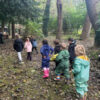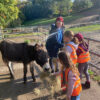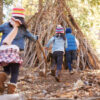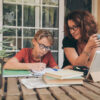Swim England tell us why it should be and Vicki Bates from the little swim school thinks she agrees!
Ahead of this year’s World Health Day on April 7th, Swim England launched their #LoveSwimming Campaign to ask doctors to prescribe swimming more often to help long-term medical conditions, backing up their campaign with real life examples of people whose lives have been transformed by being prescribed swimming!
Wanda says she was feeling like an old lady before she was forty with asthma, arthritis and back pain. She described her life as planning around her medical conditions until her physiotherapist suggested swimming. In the short Swim England film Wanda says “It’s been absolutely life changing for me and my whole life is easier than it used to be – I totally feel that I have claimed my life back”.
Steve’s physical health was appalling – he was massively overweight and had been diagnosed with type 2 diabetes, but still did nothing about it. He then had a stroke and that, he says, changed his life. He started swimming and realised his fears about people looking and pointing at him weren’t necessary as they weren’t looking or pointing! Steve said “The benefits of swimming – physically, mentally and socially are massive – the exercise I’ve found that works for me is swimming.”
Paul suffered from constant back pain as a result of working long hours, sitting in a chair – often for 12 hours at a time. He managed his pain with painkillers but then looked for an alternative and saw a physiotherapist who recommended swimming. He literally built up from one length to 40 and says “The further I go, the better I feel afterwards – I feel as if I’ve had some type of internal massage – for hours I feel as if I had no pain at all – for whole days – I love swimming!”
These inspirational stories show what an amazing tool swimming can be in recovery from serious illness and aches and pains, as well as for the many other health benefits it delivers; fitness levels, weight loss, feelings of wellbeing and mental health benefits, to name but a few.
Swim England go on to say that the current Health Secretary, Matt Hancock, has called for a ‘culture shift’ and for medical professionals to act on the evidence that activity, such as swimming, can cut the risk of illness and boost survival from major disease.
Elaine McNish, Head of Health and Wellbeing at Swim England said: “Swimming is an ideal activity which can help people manage a range of medical conditions and we are calling on the medical profession to consider recommending swimming to people who would benefit from improved physical health.”
I’m not sure if it’s me getting older but I think over the past few years, as a nation, we are waking up to the realisation that if we want to live long healthy lives, we need to take care of ourselves both physically and mentally. Some of the medical profession also appear to be moving towards the more progressive idea of prevention rather than cure and alternative therapies rather than the constant prescription of drugs that just relieve the symptoms, but don’t help the actual condition. I have a bad lower back and after years of taking care and being over-careful, I have started to build up the muscles around my back – swimming along with weight training have helped me to feel better now than I have felt in a long time. I’m lucky, running a swim school means I know the many benefits of swimming but I really agree with Swim England that if doctors prescribed swimming for relevant conditions – physical and mental, we would definitely be a healthier nation.
I have mentioned many times the multiple benefits of swimming and this just adds another reason as to why, as a parent, you should encourage your little one to love the water and take them swimming or to lessons that teach them water confidence, water safety and swimming skills. It has been shown in many studies that if children are physically active with sports like swimming when they are younger, they are more likely to be fit and healthy as adults. Even if your little one doesn’t continue swimming as an adult, they will have the skills to fall back on if they ever need them in later life. I say teach your little one to swim – for now and the future – for safety and long-term health – it’s all pros and no cons!
If you want more information on preschool swimming, do visit www.thelittleswimschool.co.uk call us on 01273 207992 or email info@thelittleswimschool.co.uk

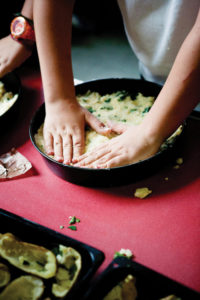
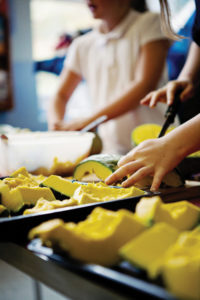 Or use festivals as your excuse for experimentation. Make a simple curry with your children for Diwali or a chili for the Day of the Dead.
Or use festivals as your excuse for experimentation. Make a simple curry with your children for Diwali or a chili for the Day of the Dead.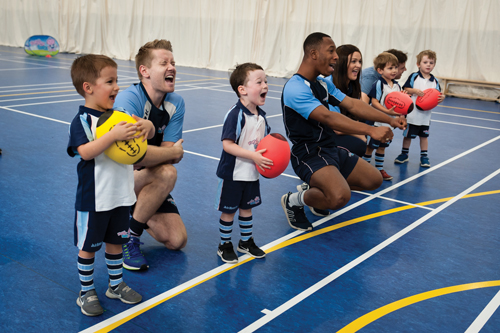
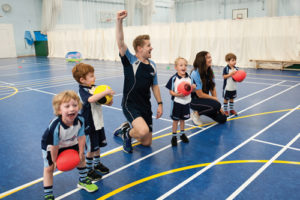 However, we are also living in an age where children have never had so many opportunities to try new things, have experiences, travel and learn life skills through their hobbies and interests. Although technology can be a distraction for parents and children, it is also the gateway to finding out what’s going on in your area such as sports, dance, arts and crafts classes. Parents can take advantage of taster classes and children can then decide which classes they want to take.
However, we are also living in an age where children have never had so many opportunities to try new things, have experiences, travel and learn life skills through their hobbies and interests. Although technology can be a distraction for parents and children, it is also the gateway to finding out what’s going on in your area such as sports, dance, arts and crafts classes. Parents can take advantage of taster classes and children can then decide which classes they want to take.
 scussing the news might not be a part of everyday conversations. The increased use of technology might mean there are fewer opportunities for having a chat and as a lot of the news can be quite negative, many parents may want to shield and protect their children from it.
scussing the news might not be a part of everyday conversations. The increased use of technology might mean there are fewer opportunities for having a chat and as a lot of the news can be quite negative, many parents may want to shield and protect their children from it.